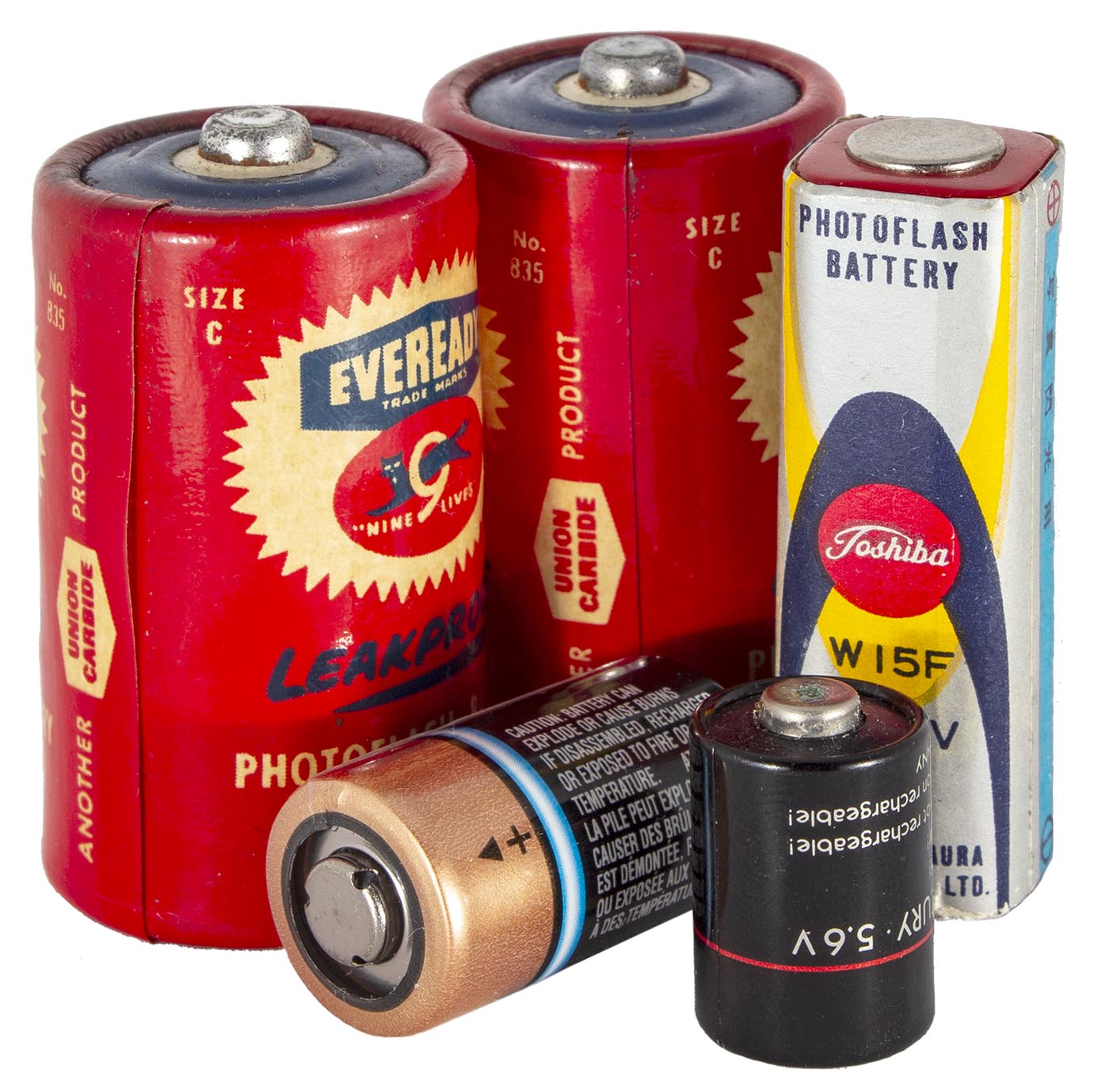
Camera Batteries
Camera Batteries can be a problem just
figuring out which to buy for what. Before
automation in cameras, they were
mechanical machines and required no
batteries. Even early cameras with selenium
cell light meters did not require them. But
as more convenience was built in, it had to
be powered and so the cameras we love
today all use batteries in one form or
another. Cameras have become electronic
devices and batteries have become hi-tech.
It would be nice if all cameras used the same
battery. It would be nice if all batteries used the
same charger, or had the same voltage, or were the same size. But like the names of Canon Cameras, the
batteries are not easy. So now figuring out which battery goes with which camera and which charger can sometimes be confusing. Maybe all of the time. These notes are intended to throw some light on this problem.
Battery and camera development proceeded together in lock step. For a century cameras were purely mechanical and batteries were irrelevant. The first need for electricity was for light metering. Canon’s Model 7 introduced in September of 1961 used selenium photocells to power a calibrated meter. Canon’s first battery arrived with the Model 7S
The Canon Model 7 introduced in September of 1961 with its Selenium photo cell lightmeter. It was the first Canon camera to require electricity to function fully.
in April of 1965. This camera a CdS (Cadmium sulfide) cell which varied in resistance depending on the amount of light falling on it. To function as a light meter it required a source of electricity.
The mercury battery was known in the 19th century but was not developed until 1942 for wartime miniature devices. By 1965 it was available as a commonly used button cell. It most valuable feature was an almost constant voltage of 1.35 volts during its useful life. It was used in several models till about the end of the “F” series.
The Canonflex series did not require batteries. They all used clip-on selenium meters except the the Canonflex RM which used a built-in selenium meter. No batteries in the bunch.
It was with the AE-1, introduced in April of 1976, that Canon embraced batteries for their cameras. The AE-1, and all of the “A” series, used electrical circuitry to control exposure and shutter timing and operation. This required more power than could be obtained from a button cell.
Prior to the 1960’s the most common batteries were Zinc-Carbon based. The problem with them was that they did not have a great service life. They simply did not provide sufficient power for many uses. Research in the 1930’s led to development for silver oxide batteries which had good power characteristics and shelf life but they were expensive to produce and they were mainly relegated to watches and hearing aids.
In the 1960’s a new type of battery was introduced to the market that we commonly call an “alkaline” battery. These have 3 to five times the power capacity of zinc-carbon batteries, better shelf life and are much more ecologically acceptable.
This is the battery compartment on the Canon AE-1. The 6 volt 4LR44 is an alkaline battery which is often used in the AE-1 without ill effects.
Because alkaline batteries decrease in voltage as they are used they are avoided in light metering circuits where they could affect meter readings. The battery called for in the AE-1 User Manual was a 6 volt silver oxide battery which had good energy density and had a constant voltage during their lifetime.
Later it became common for people to put alkaline batteries in their AE-1’s and rely on the films exposure latitude to handle any exposure effects. But that is not really encouraged, especially with color film.
Accessories such as the Power Winder A of the Speedlite 155A used alkaline AA cells.
This Page is Not Finished
We have a Newsletter
There is a Newsletter for thecanoncollector.com to keep you up to date on what we are posting. Try it!
This website is the work of R. Flynn Marr who is solely responsible for its contents which are subject to his claim of copyright. User Manuals, Brochures and Advertising Materials of Canon and other manufacturers available on this site are subject to the copyright claims and are the property of Canon and other manufacturers and they are offered here for personal use only.


